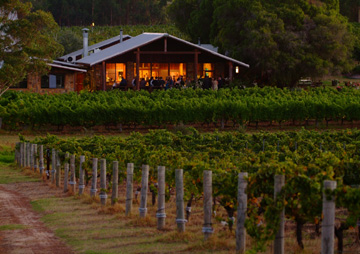 Capaia Wines
Capaia WinesThis was the comment the Comte Stephan von Neipperg, the winemaker for the Red wines at Capaia, made when I asked if anyone could guess the origin of his Red wines in a blind taste. Could anyone guess South Africa? "Impossible!" Everyone at the table agreed that South Africa would be last on the list of possible regions. Napa, Bordeaux, Washington State, Margaret River maybe, but not South Africa.
Stephan, who is a dead ringer for a young
Claude Rains and the proprieter of
Chateau Canon La Gaffeliere, manages the wine holdings for a family that has been a winegrower for eight centuries. Their properties include La Mondotte, Clos de l'Oratoire, Chateau Peyreau, Chateau d'Aiguilhe and Clos Marsalette.
Today at lunch we enjoyed the Ohio introduction of Capaia's three wines which are flat out the best wines I have tasted from South Africa. If this is the potential of this region, with proper investment, siting and vinification, then we should be seeing much better wines coming from this region.
The Estate property is owned by Alexander and Ingrid Baron von Essen and is located north of Cape Town 30 kms from Table Mountain. The soil is mostly schist and the four year-old vines are stressed from the difficult conditions. Wines are fermented in 150 year-old French oak in a state of the art new winery. The official region is Philadelphia which was created by this project to kick off a new winemaking area.
2005 Capaia ($45) -- This is the flagship, which is a blend of Cabernet Sauvignon, Merlot, Cabernet Franc and Petit Verdot (48/43/7/2) aged 15 months in barrels. It is hard to believe this concentrated yet elegant wine is from 4 year-old vines. Enticing nose, big fruit, long finish with subdued tannins. The trick I was told was to pick the grapes when the seeds are ripe to reduce the astringent tannins. The winemaker was looking for "profoundness and harmony". Mission accomplished! Drink now or hold for 5 to 10 years.
2005 Blue Grove Hill ($20) -- This is the 2nd label with Merlot, Cabernet Sauvignon and Cabernet Franc (52/44/4). Aged eight months in used French oak, this wine has big aromatics, lots of soft fruit and is very drinkable now, but will age 2 to 5 years. The
Capaia may be beyond your budget, but the Blue Grove Hill "Red" will change your mind forever about South African Red wines.
2006 Blue Grove Hill Sauvignon Blanc ($19) -- Cool fermentation in French oak as well as stainless steel, this wine is made in the French style with elegance and a clean, crisp finish. No grass or grapefruit here. The owner, Alexander, insists this wine will age and improve over the next 4 years. This may be a tough price point for a South African Sauvignon Blanc for people used to "value" thirst quenchers, but the wine will hold its own against many wines from
Sancerre or Bordeaux.The wines are imported in the US by
Vintus operated by Michael Quinttus from Pleasantville, New York.
 2003 C. G. Di Arie, Shenandoah Valley Zinfandel ($25) -- From the Sierra Foothills of California this new project caught my eye when tasted recently. Last night I took a bottle to the local ZAP meeting and it was the first bottle emptied. That's a compliment and a problem when you want to taste more!
2003 C. G. Di Arie, Shenandoah Valley Zinfandel ($25) -- From the Sierra Foothills of California this new project caught my eye when tasted recently. Last night I took a bottle to the local ZAP meeting and it was the first bottle emptied. That's a compliment and a problem when you want to taste more!



